Scheduling
Learn to schedule jobs in hotglue
Job Scheduling
Since hotglue syncs data via asynchronous jobs, it is often optimal to configure a sync schedule that is used to automatically trigger jobs at predetermined intervals.
hotglue leverages UNIX cron expressions to offer flexible job scheduling. For example, the following expression would trigger every day at 12:00am UTC:
cron(0 0 * * *)
How to configure the sync schedule
Using a default sync schedule
A default sync schedule is a sync schedule that will apply to every tenant that links a source to that flow.
The default sync schedule will not apply to any tenants that have already linked a source. The schedule (and any changes) only apply when tenants link a source.
To configure a default sync schedule, you will first need to enable the Automatically enable default sync schedule environment setting:
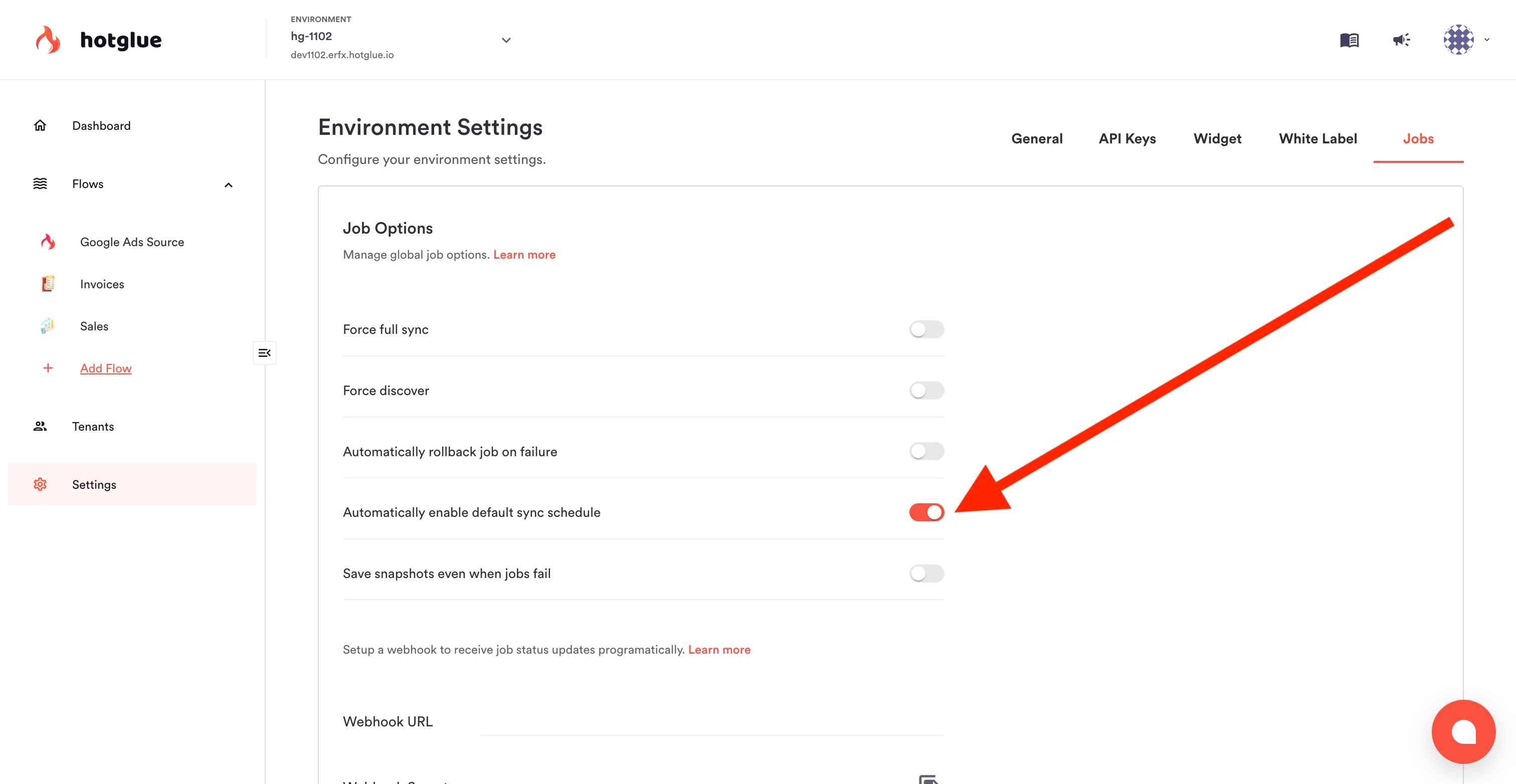
Automatically enable default sync schedule setting
Once this setting is configured, open the flow you wish to add a default sync schedule for and open the Sync Schedule drawer
Make sure you’re in the admin view when setting a default schedule, or it will not apply properly.
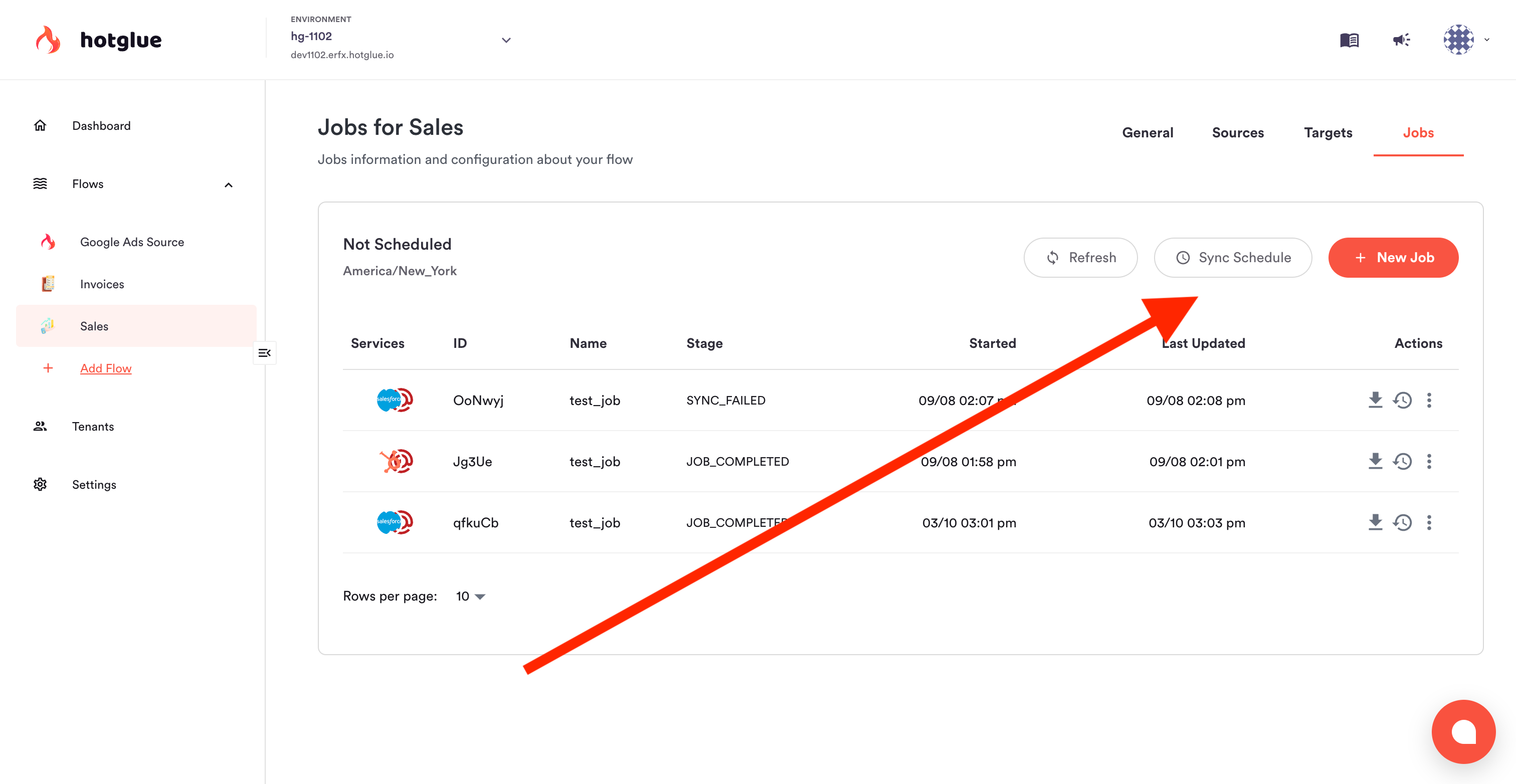
In the schedule editor, configure your desired sync frequency, and Save. You should see the status set to enabled if it is enabled correctly.
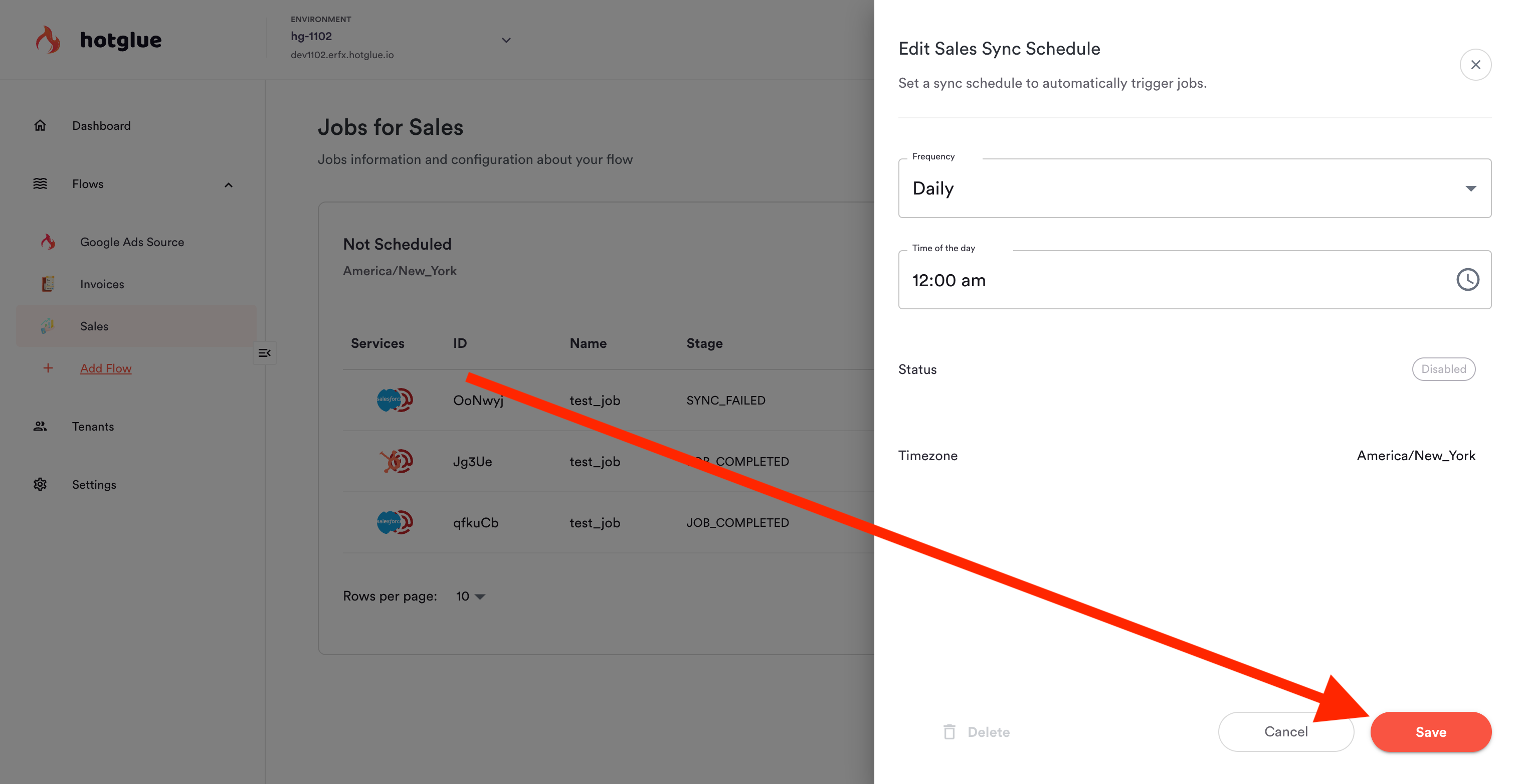
Using the API
If you’d like to apply a more granular default sync schedule using a cron expression, (e.g. every 15 minutes) use the API to create a sync schedule for default tenant.
Customizing schedules for tenants
To configure a sync schedule for a specific tenant, first navigate to the desired tenant.
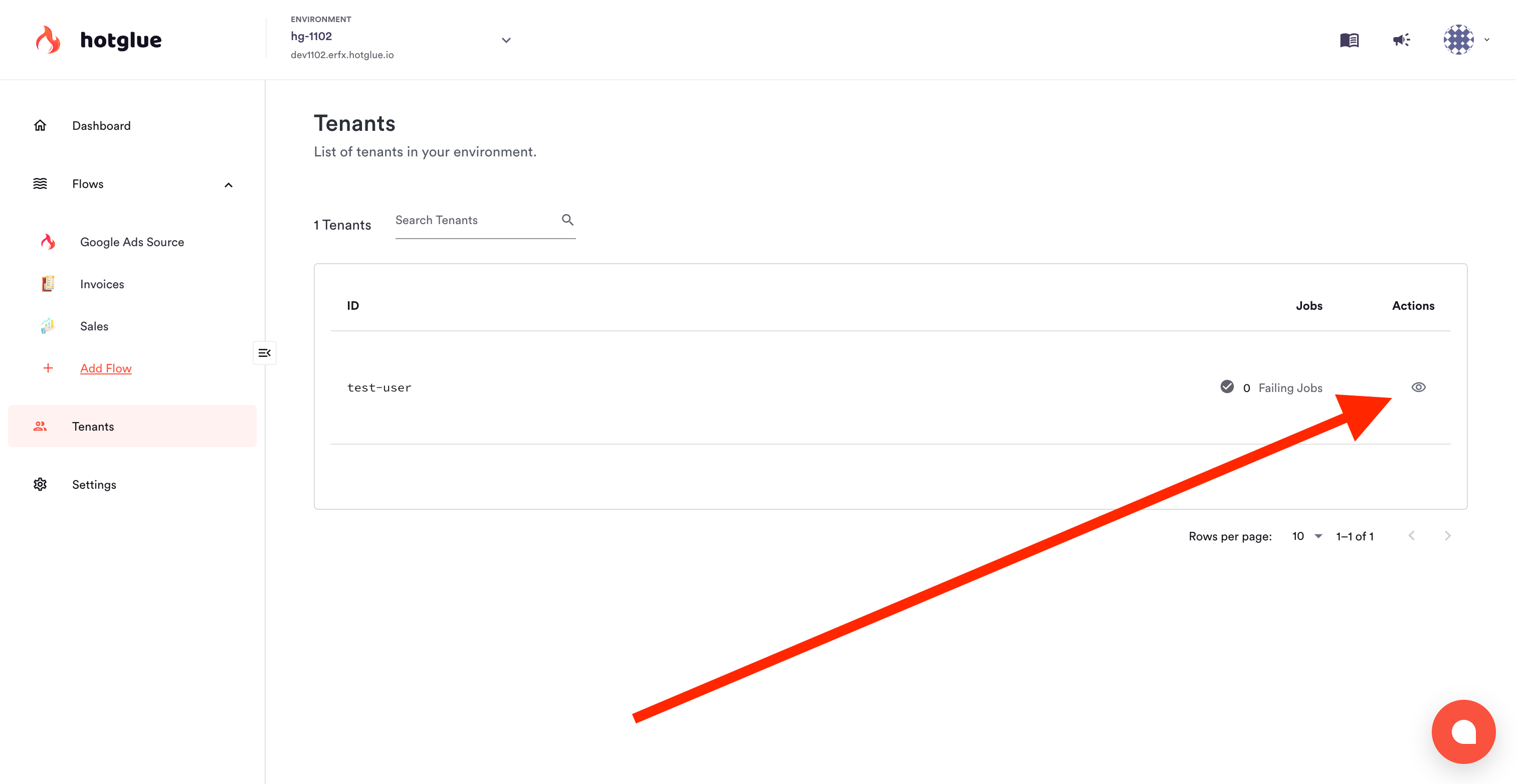
From here, open the relevant flow you wish to schedule and open the sync schedule drawer.
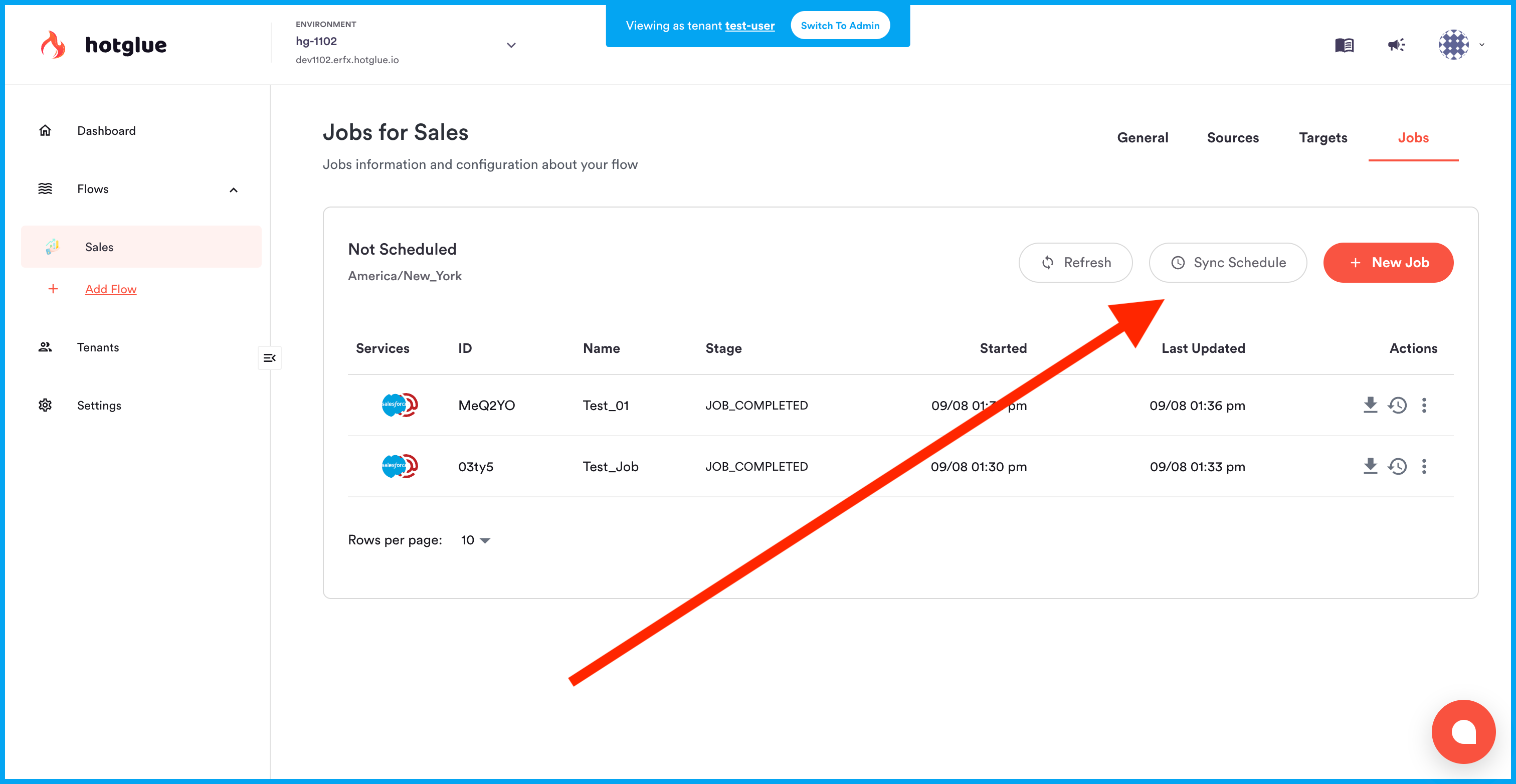
From here you can configure the desired sync schedule, and press Save. If done correctly, you will see the status change to enabled.

API
To configure a sync schedule via the API, head to the schedule endpoint docs.
Granular sync schedules
You can use the API to configure any cron expression as a sync schedule. This is often helpful if you need jobs more frequent than hourly.
You can use this to create a schedule for default tenant or any individual tenant.
Ignoring default credentials
If you want to avoid running scheduled jobs for your default credentials, but are using your default sync schedule to cascade to new tenants, you can use the API to create a sync schedule for your default tenant and set "state" = "disabled"
This will continue to apply your sync schedule to new tenants but will avoid running scheduled jobs with your default credentials.

